Short Selling
In order to short a stock, an investor must borrow shares of a company’s stock from a broker and then sell those shares on the open market in the hope that the stock price would fall. The investor anticipates repurchasing the shares at a discount, selling them back to the broker, and keeping the price difference as profit.
To do this you will need a margin account.
Short selling is not something you can do in a retirement account.
We only consider shorting stocks that are falling.
An investor who shorts a stock may benefit from a loss in its price; if the stock drops enough, the potential returns could be large.
However, there are considerable hazards associated with shorting. The investor will incur a loss if the stock price increases rather than declines because they will have to be purchased again at a higher price. We never sit holding a losing position. Once the trend changes we exit the position no matter if we have made money or not. A stock’s potential upside is also limitless, which means that shorting has an unlimited chance of losing money. Additionally, shorting a stock puts the investor at risk of a short squeeze, in which the short seller is forced to acquire shares at a higher price as a result of a rapid rise in demand from other investors, resulting in even greater losses.
We try to avoid Short Squeezes by starting a short position from the top of the Panic Zones.
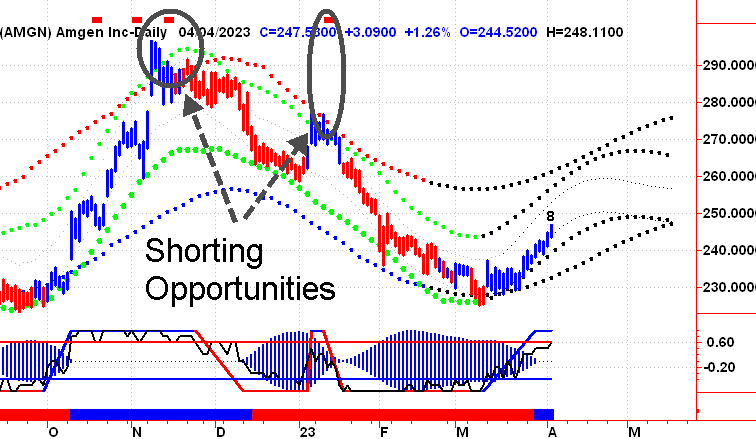
We never want to start a short position from the bottom of the Panic Zones. This is where short squeezes start.
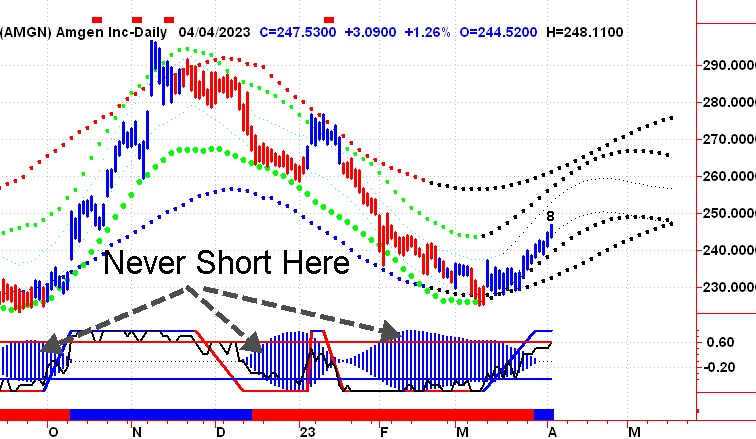
We only short stocks we want to own for the long term. As all stocks cycle up and down this allows us to acquire additional income from our favorite stocks when they are cycling down.
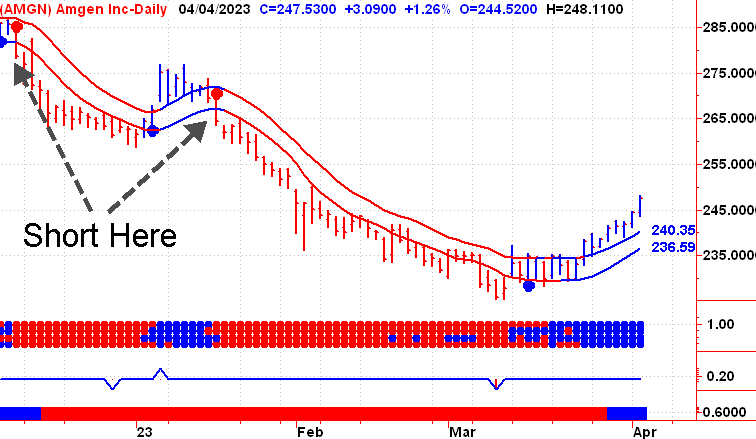
And since were shorting our favorite stocks, we will not only cover the remainder of our short position when the trend changes, but will also buy shares in the long at the same time.
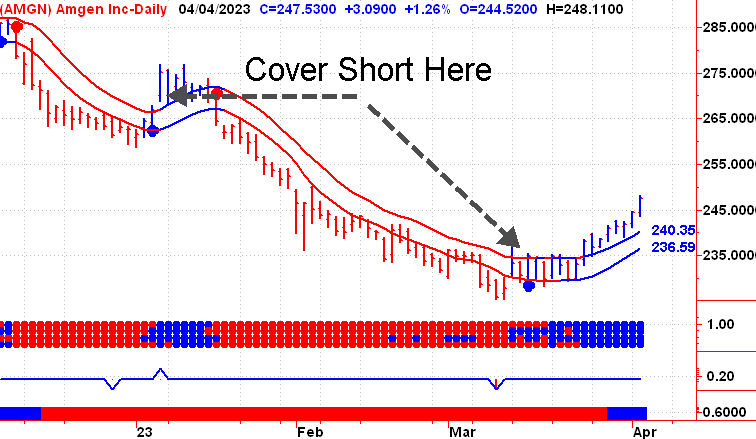
As a stock falls, we systematically take profits along the way at our predetermined profit targets. We never sit and wait until the trend changes before taking some profits.
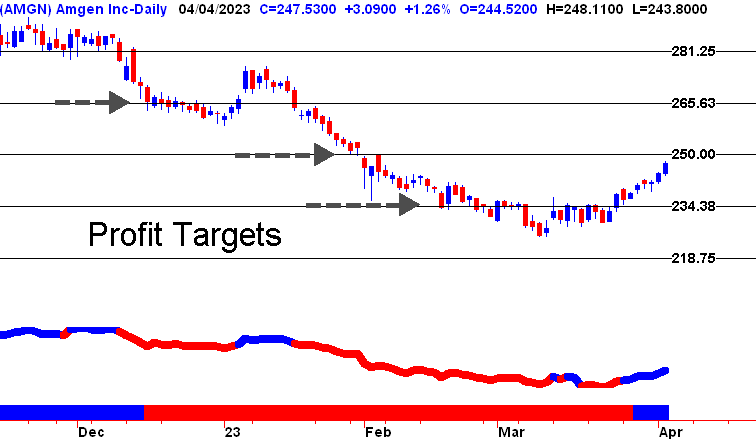
Timewise, stocks generally fall faster than they rise, but they rise for a lot longer than they fall. We always assume we will get kicked out of a short position. When a trend starts to change, we want to be on the wrong side of the trade for no longer than one bar. For short-term traders this means one day, for long-term investors this means one week.
We never short a stock because we don’t like it; we never short a stock because we think it’s going down, we never short a stock because we are anticipating bad news. The only reason to short a stock is because the trend has changed and the stock price is falling.
Please Read That Again.
The only reason to short a stock is because the trend has changed and the stock price is falling.
In general, shorting can be a high-risk, high-reward trading technique that calls for risk management. Before engaging in short selling, it’s crucial to understand the potential risks and benefits.
Important – Pick the appropriate stocks: Not all equities can be shorted.
We only short our favorite the Stocks.
You never want to short a stock that the market thinks is a potential takeover target.
Even with the best research, there’s no guarantee that you can totally eliminate this risk.
Shorting a small cap stock is often quite difficult as your brokerage firm may have trouble finding shares to borrow.
Watch the short interest: A short squeeze risk might increase with high short interest levels. Know how many shares of the stock you are shorting are being held short.
If you’ve never shorted a stock before, start off slowly.
If you normally trade 100 shares, short 10.
If you normally trade 1000 shares, short 100.
Stocks go up and stocks go down, and 95% of investors have no idea how to make money when stocks are falling. You should learn how to profit when stocks are falling.

